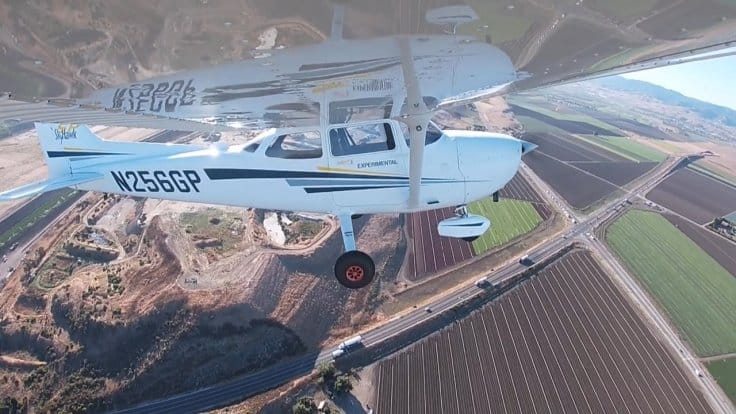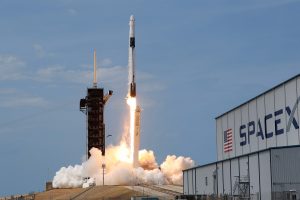The weather conditions at Cape Canaveral Air Force Station were poor all day, as a reinforcing low pressure system crossed the Florida peninsula on Sunday. There had been occasional rain and plenty of lightning.
SpaceX had already cancelled one launch out of Florida by mid-morning, a flight carrying five hundred Starlink satellites. But the company was hoping to get off on Sunday night the second flight of a scheduled doubleheader, and as the clock ticked down on the SAOCOM-1B mission, weather conditions started to change slightly.
At 7:18 pm ET (23:18 UTC), the weather at the launch site had only just turned green, so a Falcon 9 first stage, which had been used three times, took off on its fourth flight. And it was a historic one as SpaceX launched a rocket for the 100th time, and flew for Argentina’s space agency a rare polar corridor flight from Florida.
The Century Mark
In March 2006, SpaceX launched its first rocket. This was the small Falcon 1 rocket that crashed in flight for about half a minute after its single Merlin engine caught flames. After another two unsuccessful attempts, SpaceX will enter orbit with the Falcon 1 rocket on September 28, 2008.
The company then turned its attention to the production of the bigger Falcon 9 rocket, which first flew in 2010. In March 2013 SpaceX launched its 10th overall mission.
Since then, the launch cadence has improved, with SpaceX producing five iterations of its Falcon 9 rocket and the Falcon Heavy booster. It took the company seven years to get from its first launch to its tenth. SpaceX has gone from its 10th mission into its 100th in seven years.
Polar Corridor
Sunday’s flight also marked the first time a Florida rocket — optimized for equatorial launches — was launched into a polar orbit in 50 years. The last polar mission came in 1969, with the launch of a weather satellite for a NOAA predecessor called Environmental Science Services Administration.
A “polar” mission essentially means that a rocket puts a satellite into orbit that traverses the poles instead of following the equator around the earth. Most rockets launched for polar orbits from north or south-facing spaceports, such as California’s Vandenberg Air Force Base.
The biggest challenge of flying a Florida polar mission is the potential for flying over land. To hit orbit safely, Sunday’s Falcon 9 rocket performed a “dog-leg” maneuver to the east to skirt off Florida’s southeast coast. Although the second stage of the rocket ultimately flew over Cuba, SpaceX and the 45th Space Wing decided that given the altitude of the second stage, there was no danger to the island country.
Watch the full mission recap here:
Want to buy a Tesla Model 3, Model Y, Model S, or Model X? Feel free to use my referral code to get some free Supercharging miles with your purchase: http://ts.la/guanyu3423
You can also get a $100 discount on Tesla Solar with that code. Let’s help accelerate the advent of a sustainable future.





